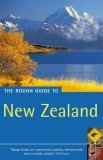The mountain range is geographically unique as it runs in a North-South direction. So even without a compass, you can tell where North, South, East and West are, simply by looking at the mountain range.

The left side points North, while the right side points South
View from Deer Park
Queenstown, Aug 2006
There are various stories regarding how The Remarkables got its name. One story cites its unique North-South orientation. Another which I have read attributes it to the different colours of the mountain range as seen during the day and across the seasons. Having seen for myself the colours of The Remarkables over the many vacations spent in Queenstown, I will go for the latter story.
If a picture paints a thousand words, then these photos speak volumes about the remarkable beauty of The Remarkables.

The Remarkables in ash-grey in winter
View from Steamer Wharf
Queenstown, July 2004

The Remarkables in "brownies" in late spring
View from Lake Esplanade
Queenstown, Nov 2005


The Remarkables having the "blues" in winter
View from Lake Esplanade
Queenstown, Aug 2006


The Remarkables in the "pink of health" in winter
View from Lake Esplanade
Queenstown, Aug 2006


The Remarkables "on fire" in winter
View from Lake Esplanade
Queenstown, Aug 2006


















































